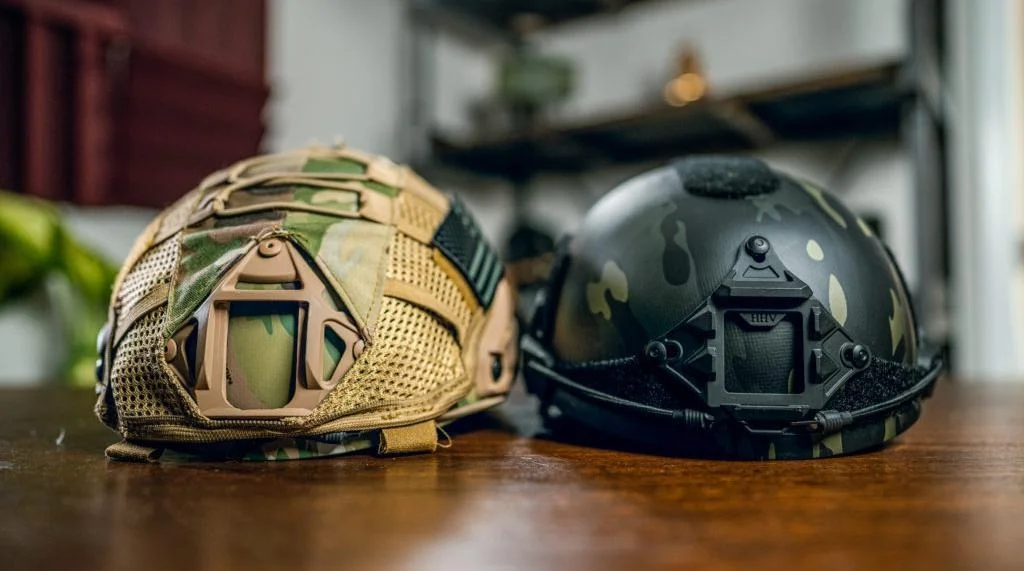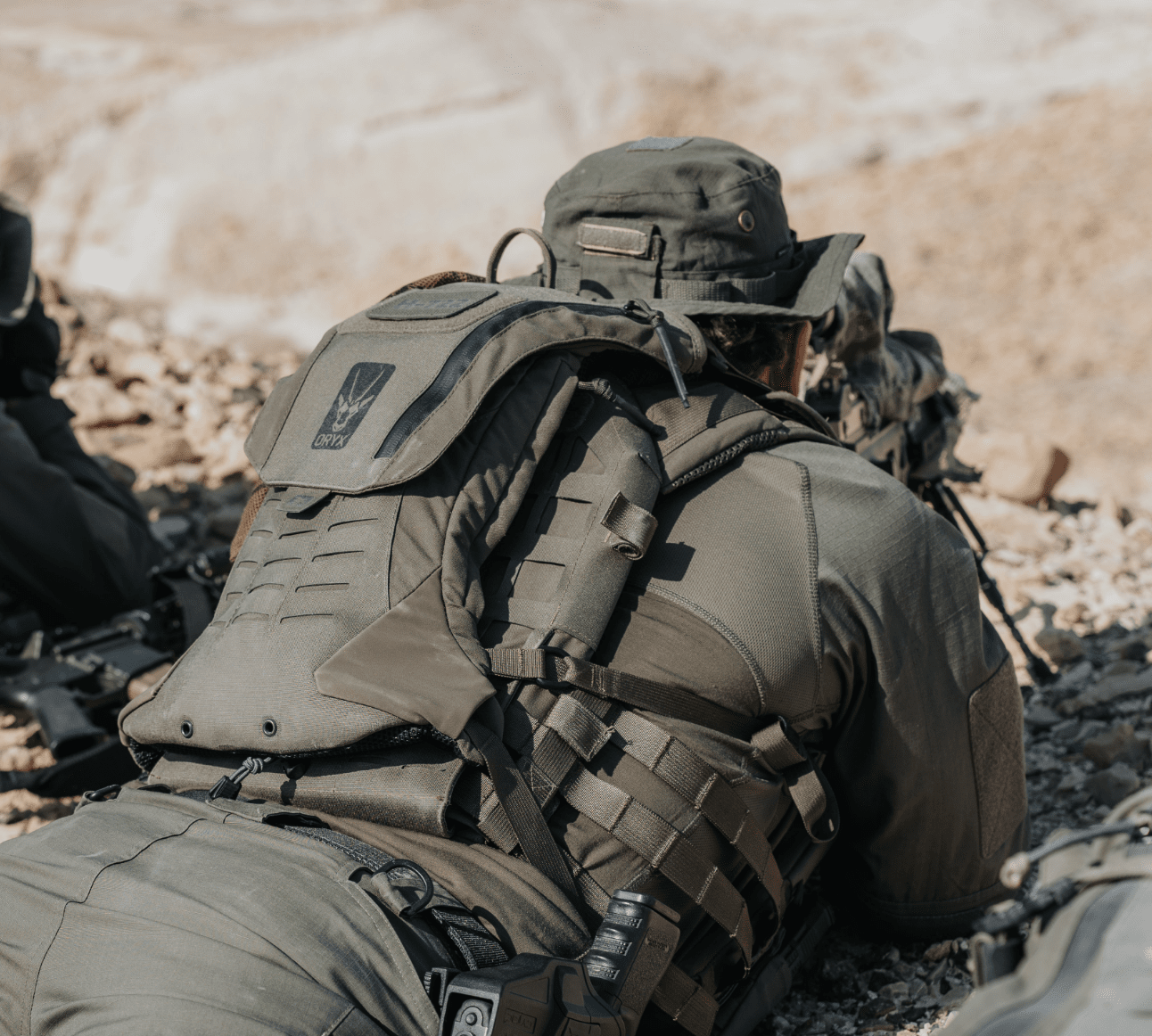You have several alternatives when it comes to tactical gear, such as body armor. When looking to purchase a bulletproof vest, plate carrier, or other tactical equipment, tools, or accessories, there are many aspects to consider, ranging from different protection levels to different brands and materials.
We will discuss tactical ballistic protection equipment today that is worn by members of the armed forces, law enforcement, and civilian customers to shield them from rifle bullets. Although a soft armor ballistic vest is excellent for protecting against pistol calibers, if a rifle round is being fired at you, it won't do you much good.
Hard armor plates can help with that. These plates, which can be made of various materials, are worn in plate carriers. Steel is frequently used to create hard body armor plates, but is it the safest option? Let's go into more detail about it.
WHAT RESOURCES ARE USED TO MAKE ARMOR PLATES?
There are various factors to take into account while producing hard body armor, whether it is for the military, law enforcement, tactical gear nerds, or civilian customers:
- Utilized ballistic material
- Weight,
- Structural soundness,
- A shelf life,
- The wearer's security
In order to create body armor, modern manufacturers use a wide variety of ballistic materials. The most common materials used to make tactical equipment, including armor plates, are listed below.
-
AR 500 STEEL
High carbon alloy abrasion-resistant (AR) steel plates are made to be formable and weatherproof. In projects where material failure is required from wear or abrasion rather than extreme temperatures like welding torch flames where there is a greater chance of volatilization which would cause destruction over time even if covered with paint etc., the addition of alloys makes them harder when heat treated as well, making it excellent! However, you don't want this to happen during daily use either!
Although AR500 steel armor plates are produced by many body armor manufacturers worldwide and have the greatest potential for reuse, many people believe that they are not the safest option. Additionally, their weight makes them difficult to maneuver.
-
PLATE OF CERAMIC ARMOR
Other often utilized materials for the creation of body armor include ceramics such as aluminum oxide, silicon carbide, or boron carbide. Typically, ceramic body armor has a UHMW Polyethylene backing with ceramic attached to its surface. Due to its light weight and ability to break up incoming shots, ceramic makes it simpler for PE backing to withstand their impact.
They are also lighter than steel, but once shot, even with a tiny caliber, they may lose some of their defensive qualities.
-
POLYETHYLENE UHMW
In recent years, producers have been using Ultra High Molecular Weight Polyethylene exclusively to create body armor. UHMW PE body armor is strong and lightweight, and it also has a longer shelf life. Contrary to steel body armor, it is considerably safer. Ceramic and steel hybrid plates are a better choice for higher protection as UHMW PE is only strong enough to make level III armor plates.
It's important to note that PE plates have neutral or positive buoyancy, which means that if you drop them into the water, they will float.
DUE TO THE UNSAFETY OF STEEL ARMOR PLATES
Spalling is one of the main reasons why the majority of military personnel and citizens avoid wearing steel armor. You're probably wondering what spalling is at this point.
Simple enough, what do you suppose would happen when a fast-moving bullet strikes a solid steel plate? Of course, the bullet will splinter into pieces. Steel plates are unable to control those fragments, so they are instead redirected to the sides and occasionally even upwards toward the wearer's neck. These shards and deflected bullets have the potential to cause fatal injuries.
This can be exceedingly hazardous because it has the potential to gravely harm anyone who is wearing a steel armor plate as well as others nearby. Additionally, the deflecting particles may harm your plate carriers as well as any other tactical equipment, tools, or weapon attachments you may be carrying. Your magazines, communication devices, first aid kits, and other tactical equipment tools could all be harmed by the fragment. For the purpose of bringing this section to a close, it should be noted that steel armor has been phased out by the majority of military forces worldwide, primarily due to spalling, which makes it less safe and more challenging to use than other materials, such as Polyethylene.
The inside safety lining of a bulletproof helmet is typically constructed of foams, rubbers, or plastics, however, hybrid solutions are also available. The most comfortable padding is made of foam. Different densities of polyester, polyurethane, and polyethylene foams can be used to make a tactical helmet.
To ensure a secure fit and to lessen the impact of any projectiles, almost all helmets come with some kind of padding. However, aftermarket comfort pads are also offered and can greatly enhance a helmet's wearability.
The interior lining of a helmet is equally important to the padding. To keep your head cool and prevent excessive perspiration while working for an extended period of time, the majority of helmets have a mesh lining on the inside.
WHAT MAKES STEEL ARMOR POOR?
Here are some additional reasons why steel armor is not the best choice, in addition to the serious spalling problem:
-
IMPACT ENERGY IS NOT ABSORBED BY STEEL
Even if a bullet doesn't penetrate your steel armor when it hits your plate carriers, you won't be in a good position to continue fighting. Steel plates are notoriously bad at absorbing the force of the bullet when it makes contact with the plate; even if the round misses its target, you will still feel as though you have been punched very hard. This frequently results in broken ribs and occasionally even a collapsed lung.
-
THE WEIGHT OF STEEL ARMOR
For military and law enforcement officers who must wear their plate carriers all day, the weight of the armor plates is quite important. A plate carrier can become a little too heavy to move around with when it has two thick steel panels for the front and back and all the tactical equipment, tools, packs, bags, and gun accessories attached.
A 10" x 12" steel plate can weigh anywhere from 8 to 10 pounds, whereas ceramic and PE armor are much lighter and weigh half as much.
-
STEEL ARMOR IS IMPOSSIBLE TO WEAR
Steel armor should be avoided due to its discomfort, as well. Although a slightly curved plate is more comfortable, most steel ballistic panels are straight, which increases the likelihood of ricocheting.
Moving around, carrying your tactical gear, and even executing basic tactical maneuvers may become challenging.
Contact us online right away to learn more about our body armor.



